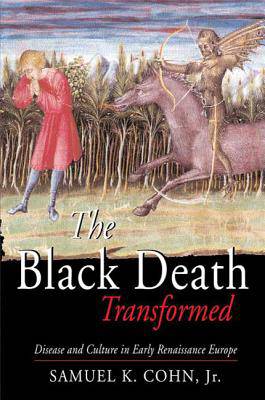
- Afhalen na 1 uur in een winkel met voorraad
- Gratis thuislevering in België vanaf € 30
- Ruim aanbod met 7 miljoen producten
- Afhalen na 1 uur in een winkel met voorraad
- Gratis thuislevering in België vanaf € 30
- Ruim aanbod met 7 miljoen producten
Zoeken
€ 88,45
+ 176 punten
Omschrijving
The Black Death in Europe, from its arrival in 1347-52 through successive waves into the early modern period, has been seriously misunderstood. It is clear from the compelling evidence presented in this revolutionary account that the Black Death was almost any disease other than the rat-based bubonic plague whose bacillus was discovered in 1894. Since the late nineteenth century, the rat and flea have stood wrongly accused as the agents of transmission and historians and scientists have uncritically imposed the epidemiology of modern plague on the past. Unshackled from this misconception, The Black Death Transformed turns to its subject afresh, using sources spread across a huge geographical tract, from Lisbon to Uzbekistan, Sicily to Scotland: more than 40,000 death documents (from last wills and testaments to the earliest surviving burial records), over 400 chronicles, 250 plague tracts, 50 saints' lives, merchant letters, and much more. These sources confirm the terror of the medieval plague, the rapidity of its spread (unlike modern plague), and the utter despondency left in the wake of its first strike. But they also point to significant differences between medieval and modern plague, none more significant than the ability of humans to acquire natural immunity to the former but not the latter.
Specificaties
Betrokkenen
- Auteur(s):
- Uitgeverij:
Inhoud
- Aantal bladzijden:
- 336
- Taal:
- Engels
- Reeks:
Eigenschappen
- Productcode (EAN):
- 9780340706473
- Verschijningsdatum:
- 30/01/2003
- Uitvoering:
- Paperback
- Formaat:
- Trade paperback (VS)
- Afmetingen:
- 155 mm x 231 mm
- Gewicht:
- 453 g

Alleen bij Standaard Boekhandel
+ 176 punten op je klantenkaart van Standaard Boekhandel
Beoordelingen
We publiceren alleen reviews die voldoen aan de voorwaarden voor reviews. Bekijk onze voorwaarden voor reviews.








